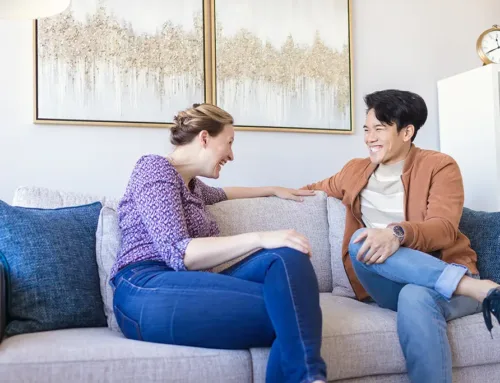Will the couples therapist take sides?
In this blog post, our couples therapist Natalie Bergman talks about asymmetries of interaction in the context of couples therapy.
Meet the author
Natalie Bergman, DCP, RPsych
COUPLES THERAPIST
Meet the editor
Ana Hoepfner, BEc
COMMUNICATIONS
Will you take my side or theirs?
“Whose side is the psychologist on?”
When you are seeing an individual psychologist, you know he or she is fully yours and has your back — supportive, compassionate, and professional.
But it’s a couples therapist you are looking for, then you might wonder: whose side is the psychologist on? This could feel scary.
You might think:
What if the couples psychologist supports only my wife, and she is talking all the time in therapy?
What if the psychologist starts blaming me for not being a good husband?
What if… ?
Interaction assymetries
When couples therapists see two partners during a couples therapy session, what might happen is that one of the partners has more time to voice his concerns, is more eloquent, and gets more attention. This is a common challenge in couples therapy called “interaction asymmetries” (Laan & Sutherland, 2021).
There can be moments when one partner’s voice dominates the session. These imbalances may occur when:
- One partner speaks more or controls the narrative.
- The therapist inadvertently aligns with one partner, leaving the other feeling unheard.
Asymmetries in interaction are one of the biggest challenges that couples therapists face in navigating the dynamics between two partners who may not always be on the same page (Laan & Sutherland, 2021).
In couples therapy, the client is the relationship itself
I like how Anthony Chambers (2023) defines the difference between couple therapy and individual therapy. He is simply asking: who is the client?
In couples therapy, the client is the relationship itself. The focus is on understanding and addressing the challenges in a relationship rather than deciding who is right or wrong. Couples therapy is about helping partners work toward the relationship they want.
If you’re in couples therapy and feel like your voice isn’t being heard, it’s okay to express this to your psychologist. Therapy works best when both partners feel supported and equally involved in the process. A skilled psychologist will welcome feedback and work to restore balance in the sessions.
References
American Psychological Association. (2023). Speaking of Psychology: Relationship advice from a couple psychologist, with Anthony Chambers, PhD [Audio podcast episode]. In Speaking of Psychology.
https://www.apa.org/news/podcasts/speaking-of-psychology/relationship-advice
Laan, A. V. D., & Sutherland, O. (2021). How couple therapists manage asymmetries of interaction in first consultations. Journal of Marital and Family Therapy, 47(2), 321–336.
https://www.researchgate.net/publication/349047541_How_couple_therapists_manage_asymmetries_of_interaction_in_first_consultations










